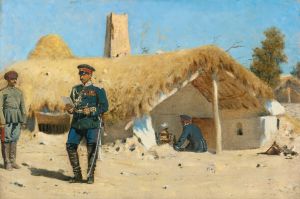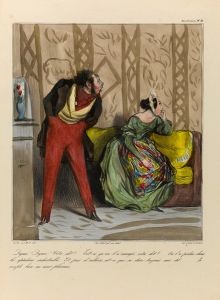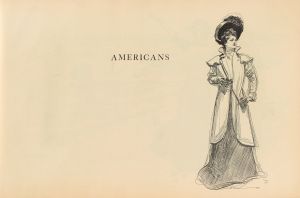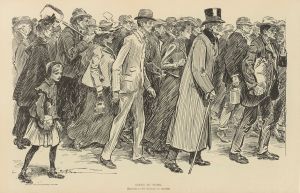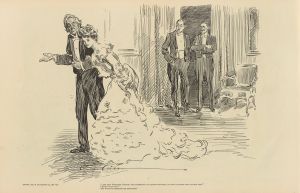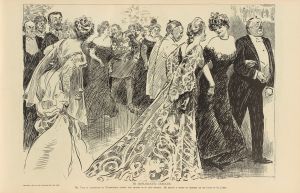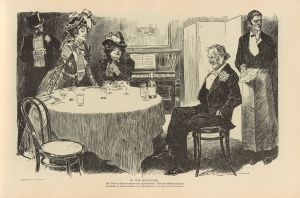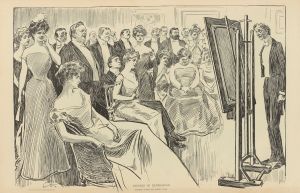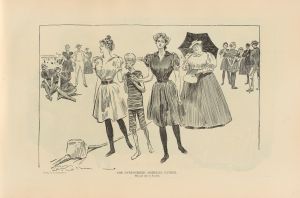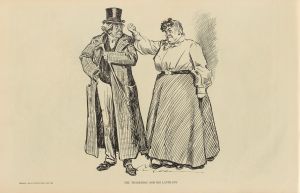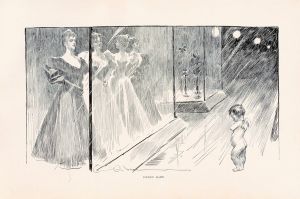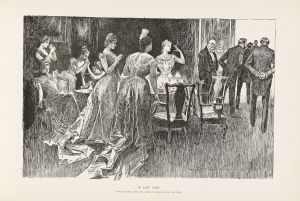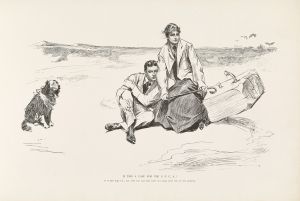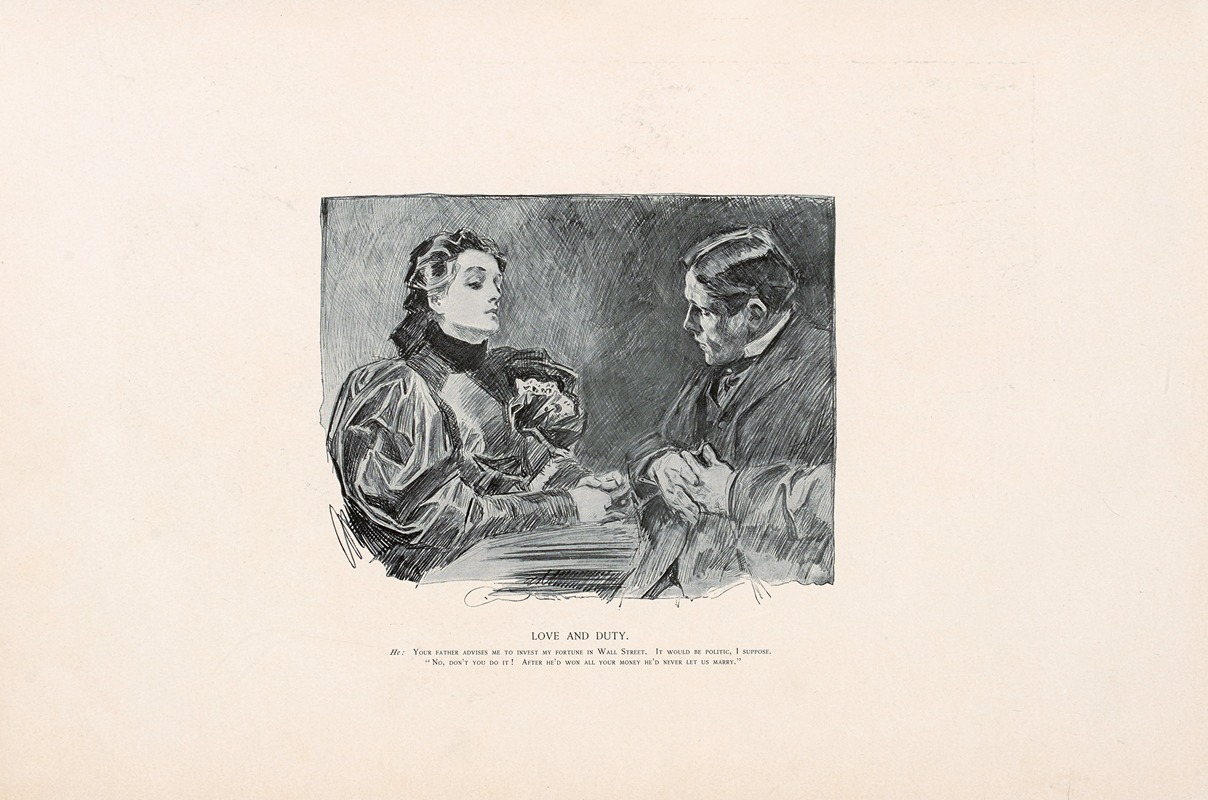
Love and duty
A hand-painted replica of Charles Dana Gibson’s masterpiece Love and duty, meticulously crafted by professional artists to capture the true essence of the original. Each piece is created with museum-quality canvas and rare mineral pigments, carefully painted by experienced artists with delicate brushstrokes and rich, layered colors to perfectly recreate the texture of the original artwork. Unlike machine-printed reproductions, this hand-painted version brings the painting to life, infused with the artist’s emotions and skill in every stroke. Whether for personal collection or home decoration, it instantly elevates the artistic atmosphere of any space.
Charles Dana Gibson was an influential American illustrator, best known for his creation of the "Gibson Girl," an iconic representation of the American woman at the turn of the 20th century. Among his numerous works, "Love and Duty" stands out as a notable illustration that reflects the societal norms and cultural values of its time.
"Love and Duty" is a black-and-white illustration, typical of Gibson's pen-and-ink style, which was widely published in magazines such as Life, Harper's Weekly, and Scribner's. The illustration captures the tension between romantic affection and societal obligations, a common theme in Gibson's work. This theme resonated with the public during an era when traditional gender roles were both challenged and reinforced by the changing social landscape.
The artwork typically features a young couple, with the man often depicted in a military uniform, suggesting a narrative of love interrupted or complicated by duty to one's country. This imagery was particularly poignant during periods of military conflict, such as the Spanish-American War or World War I, when many young men were called to serve, leaving behind their loved ones. The woman's expression in the illustration often conveys a mix of longing and resignation, capturing the emotional complexity of such situations.
Gibson's work, including "Love and Duty," played a significant role in shaping public perceptions of gender and relationships during the early 20th century. The "Gibson Girl" became a symbol of the independent and modern woman, yet she was often portrayed within the confines of traditional romantic narratives. This duality is evident in "Love and Duty," where the female figure embodies both strength and vulnerability.
The popularity of Gibson's illustrations can be attributed to their reflection of contemporary social issues and their ability to capture the imagination of the public. His work was not only artistically significant but also culturally influential, as it appeared in widely circulated publications and reached a broad audience. The themes explored in "Love and Duty" continue to resonate, as they address universal human experiences of love, sacrifice, and the conflict between personal desires and societal expectations.
While specific details about the creation and publication of "Love and Duty" are limited, the illustration remains an important example of Gibson's artistic legacy. It exemplifies his skill in using simple lines to convey complex emotions and narratives, a hallmark of his style. Gibson's influence extended beyond illustration, impacting fashion, advertising, and popular culture of his time.
In summary, "Love and Duty" by Charles Dana Gibson is a quintessential example of early 20th-century American illustration. It reflects the cultural and social dynamics of its era, capturing the interplay between personal emotions and societal responsibilities. Through his work, Gibson left an indelible mark on the visual and cultural landscape of his time, with "Love and Duty" standing as a testament to his artistic and cultural contributions.





